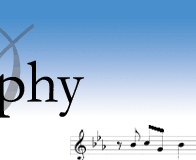


![]()
A DREAM TO PERFORM
 The
Buffalodians began their tour in Cleveland, Ohio. In late 1925, they traveled
east to Pittsburgh, Pennsylvania and eventually landed in New York City
playing shows at the Palace Theater and Gallagher's Monte Carlo, a blazing
night spot on Fifty-second Street. Coincidentally, the one-man floorshow
at the Monte Carlo was performed by one of Harold's old friends - dancer
Ray Bolger. Harold and Ray quickly renewed their friendship and even decided
to share an apartment on West Fifty-seventh Street.
The
Buffalodians began their tour in Cleveland, Ohio. In late 1925, they traveled
east to Pittsburgh, Pennsylvania and eventually landed in New York City
playing shows at the Palace Theater and Gallagher's Monte Carlo, a blazing
night spot on Fifty-second Street. Coincidentally, the one-man floorshow
at the Monte Carlo was performed by one of Harold's old friends - dancer
Ray Bolger. Harold and Ray quickly renewed their friendship and even decided
to share an apartment on West Fifty-seventh Street.
 Although Harold spent most of his time arranging, playing the piano and
singing, he collaborated with Dick George in 1926 to compose Minor
Gaff (Blues Fantasy). The solo piano piece, which was his first
published music, bore the name Harold Arluck. However, sometime thereafter,
the young musician, unhappy with his name, decided to change it instead
to sound like his mother's maiden name (Celia Orlin). The transformation
would be complete - Hyman Arluck would be known to the world as Harold
Arlen.
Although Harold spent most of his time arranging, playing the piano and
singing, he collaborated with Dick George in 1926 to compose Minor
Gaff (Blues Fantasy). The solo piano piece, which was his first
published music, bore the name Harold Arluck. However, sometime thereafter,
the young musician, unhappy with his name, decided to change it instead
to sound like his mother's maiden name (Celia Orlin). The transformation
would be complete - Hyman Arluck would be known to the world as Harold
Arlen.
Composing didn't interest Harold too much- his dream was to be a performer. Bent on a singing career, Harold considered arranging and piano playing to be the means to an end. Although his unique singing style and great sense of humor began to attract attention in the mid-twenties, his ability to arrange was still the draw. Yet, Harold was determined to sing.
Band Leader Arnold Johnson liked the new sound that Arlen was able to put into his orchestrations, but understood that if he wanted Arlen the arranger, he had to take Arlen the singer as well. As a member of the Arnold Johnson Band, Harold arranged several tunes for a revue called The Great White Scandals and even got to sing during the entr'acte. However, the arrangement grind was becoming too much and since singing was only incidental to the work he was doing, Harold left the Arnold Johnson Band and struck out on his own as a single act in vaudeville. With a distinct style, his popularity began to grow and he was finally doing what he really loved.
Although Harold lacked interest in songwriting, he continued to do so with much success. In 1929 he composed The Album of My Dreams to lyrics by Lou Davis and the song became a hit when picked up by singer Rudy Vallee. Despite his songwriting success, Harold continued to pursue his career as a singer.
In 1929, twenty-four year old Harold landed a singing and acting role as Cokey Joe in the musical The Great Day, by composer and producer Vincent Youmans. One day during a summer rehearsal the show's accompanist became ill and Harold, known to be a fine pianist, was asked to fill in and play for the dancers. During several inevitable waits, he unconsciously toyed with the pickup (a musical phrase that serves as a signal for the dancers that a routine is about to begin). As the rehearsal progressed, the pickup emerged more and more as a song fragment and varied far enough from the original idea to take on all the proportions of an original song. Composer Will Marion Cook heard Harold's idea and suggested that he make a song of it. Composer Harry Warren also liked the song idea and linked Harold up with lyricist Ted Koehler.
On July 31, 1929, Arlen and Koehler signed a yearlong contract with the George and Arthur Piantadosi firm. With the signing of this contract, Harold's hoped-for career as a singer came to an end. Harold said of the situation, "It got me away from that which I had loved, a goal I had set. And yet I suddenly realized that goal had become something my temperament couldn't take."
 The newly formed Arlen-Koehler team took the song that originated as variation
of a pickup and created the much-loved tune now known as Get Happy.
Shortly after its completion, in 1930 producer Ruth Selwyn used the song
for the first act finale in her new show entitled The Nine-Fifteen
Review and hired the team to compose several other numbers for the
review as well. Though the show itself failed, Get Happy
became a big hit - a "noisy song," as Harold referred to it.
The newly formed Arlen-Koehler team took the song that originated as variation
of a pickup and created the much-loved tune now known as Get Happy.
Shortly after its completion, in 1930 producer Ruth Selwyn used the song
for the first act finale in her new show entitled The Nine-Fifteen
Review and hired the team to compose several other numbers for the
review as well. Though the show itself failed, Get Happy
became a big hit - a "noisy song," as Harold referred to it.
The noise of Get Happy was loud enough to attract attention to the new songwriting-lyricist team identifying Arlen and Koehler as hit writers. With Get Happy and other rhythmic songs to their credit, the team developed the reputation as writers of "bluesy" rhythm numbers**, which were much in demand in the flourishing cabarets. At the heart of the cabaret scene was Harlem's infamous Cotton Club.
** It should be noted that while Harold Arlen's songs have often been mischaracterized as blues, they are actually rhythm numbers, jazz pieces, novelties, ballads and torch songs. The only song deliberately written in the blues style is I've Gotta Right to Sing the Blues.
< Previous | Top | Next >